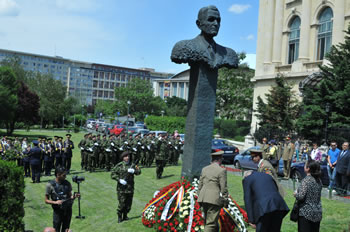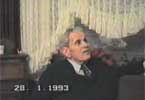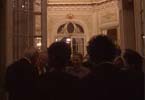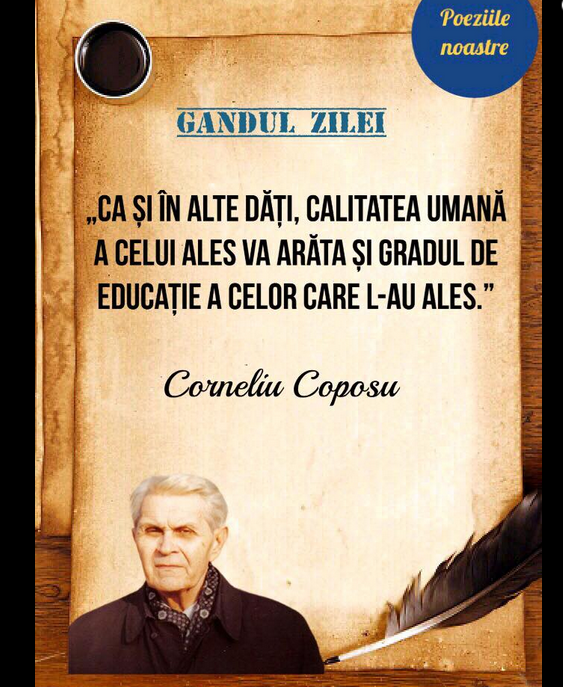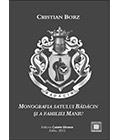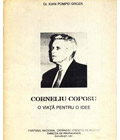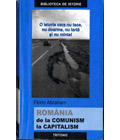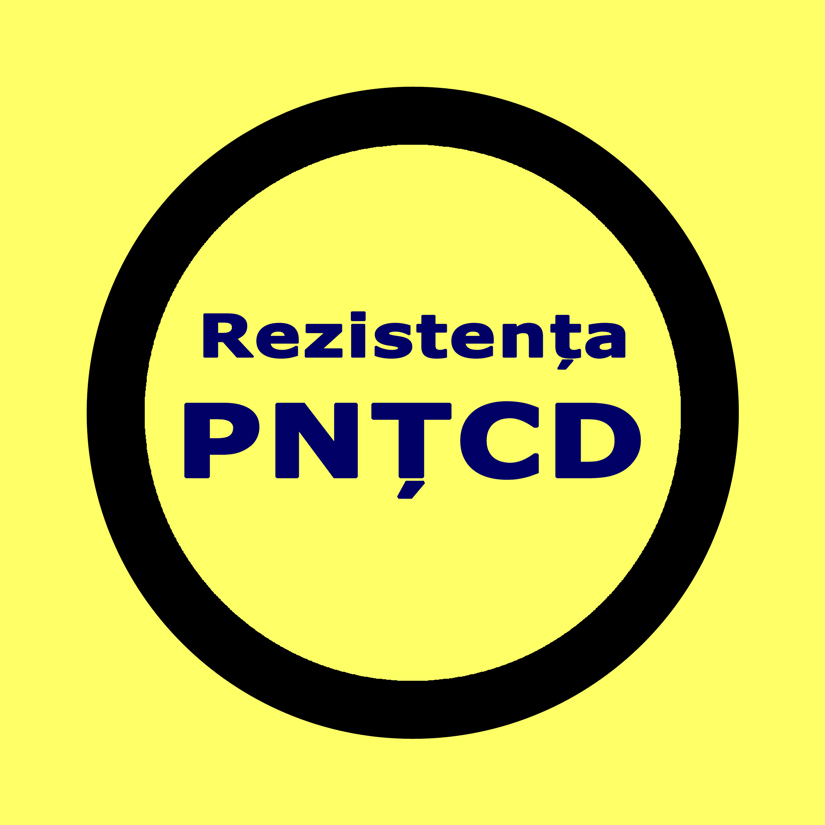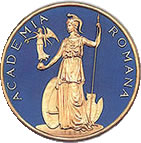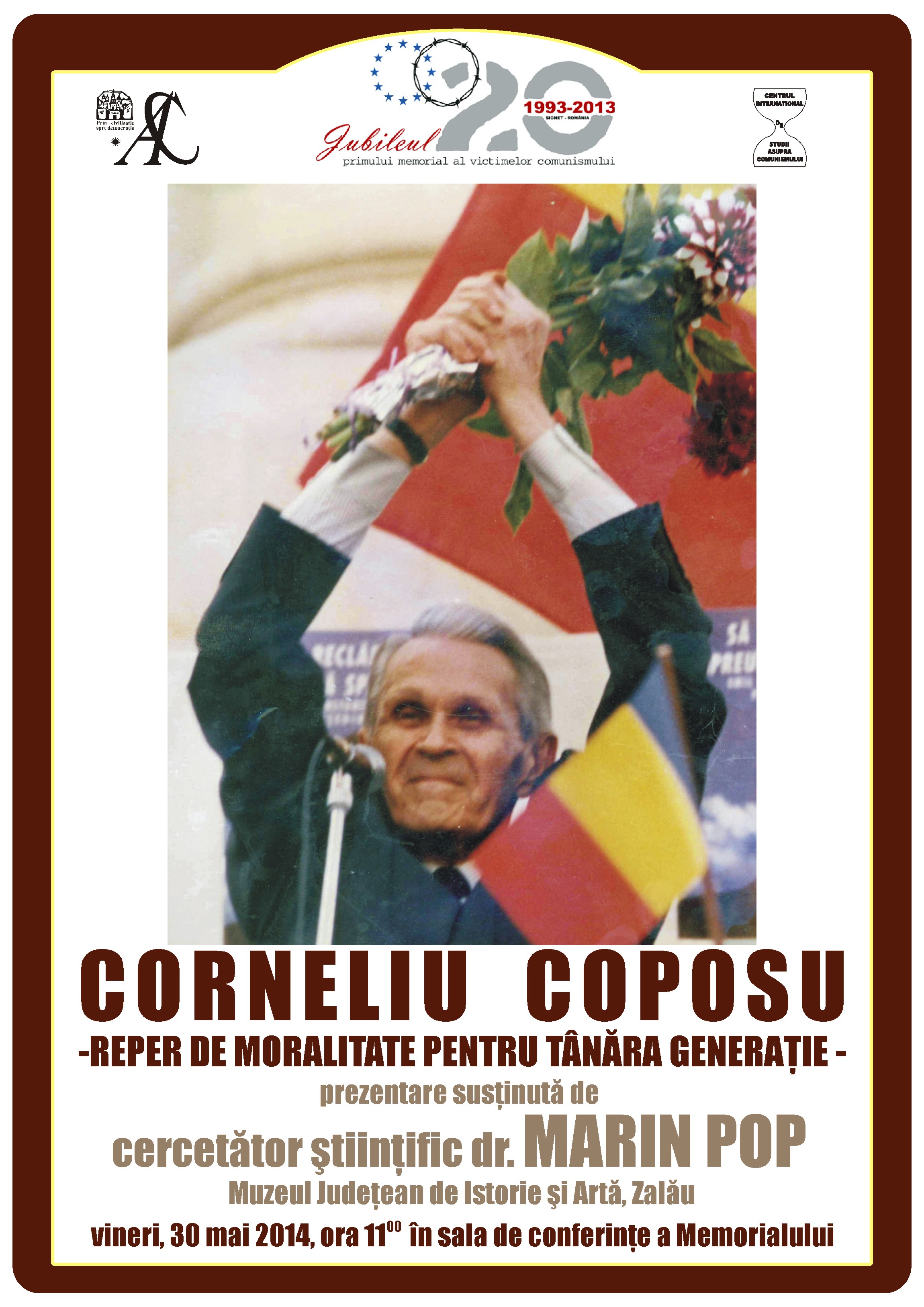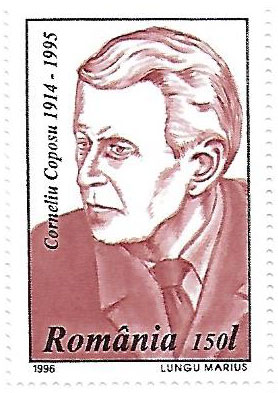Chapter IV The Ramnicu Sarat Prison
The Penitentiary of Total Isolation
Motto: “It was horrifying many times, but I am a serene man…But for the 8 years of isolation…” Corneliu Coposu about his prisons.
“People with the appearance of beasts who lower themselves to violent acts do not have the feeling of reality, of the existence of the world. They are capable of anything, even of the destruction of some existences, without thinking, giving freedom to their instincts and the aggressiveness guided by the blind discipline and the daily obedience to which they are subordinates. There is something threatening about the inexpressiveness of their faces.” (Ramnicu Sarat) This is one of the few texts kept since the years of detention quoted by the author of the most complete work dedicated to the Senior, Tudoar Calin Zarojanu, Viata lui Corneliu Coposu[8], with documents from the archive of the former Security, p. 172.
We cannot talk about Corneliu Coposu ignoring “the last period of isolation”, the Ramnicu Sarat prison. He obsessively mentioned, in any interview or evocation, the Ramnicu Sarat prison where, in his opinion, the detainees were the political guinea pigs of some Stalinist experiences. “They were not Soviet soldiers, they were professional guards and had an Asian complexion. Many jail officers were Romanians, because the Ramnicu Sarat prison was some sort of pedagogic seminar where they were brought to learn methods of torturing the detainees.” (interview appeared in Revista 22[9], November-December 1994). Corneliu Coposu spoke with detachment about his torturers who used to beat him with iron bars and sacks of sand, and sometimes he tells with humour about the lock-up days. “Sometimes we would challenge them to hit us too”, he remembers when a waggish and illiterate gaoler from the Aiud prison treated him like an ordinary “bandit”.
The completely dark memories are related to the Ramnicu Sarat prison. When he was telling about “the jail from Ramnic”, his face would change and a strange suffering would cover his body. Total isolation, penalties on absurd grounds, chronic hunger, group beatings. An entire Marxist laboratory of extermination kept up with harshness by the guards with Lombrosian complexities.
How Corneliu Coposu Went to the Ramnicu Sarat Prison
Corneliu Coposu “paraded”, according to his own expression, through almost all the prisons of communist Romania for 17 years and a half. Until 1955, when he was judged by the Military Tribunal, Corneliu Coposu had spent in prison 8 years, without a trial, on the basis of a so-called administrative penalty. On the 7th of August 1957, when he went to the Ramnicu Sarat Penitentiary, Corneliu Coposu had got to know all the great communist prisons: Malmaison, Vacaresti, Pitesti, Jilava, Gherla, Sighet, Aiud. The exact itinerary of the prisons, acoording to Zarojanu, p. 53, starting with 1947 was the Ministry of Home Affairs, Malmaison, Vacaresti, Snagov, Pitesti, the MHA, Craiova, Uranus, the MHA, Jilava, Malmaison, Midia, Ghencea, Bragadiru, Popeşti-Leordeni, the MHA, Uranus, Jilava, Gherla, Sighet, Aiud, Ramnicu Sarat, the MHA, Rubla – house arrest.
Questioned for hours, beaten and tortured, Corneliu Coposu refused any kinds of compromises. In all the penitentiaries, a “mood synthesis” was made monthly for each detainee. The Security did not have as an objective the reeducation of some detainees, but their extermination. Maniu’s nephew, as he was known in the communist penitentiaries, had to have the exact fate of the NPP leader, the only party of the masses, literally and figuratively, in the interwar period.
Until his internment in the Ramnicu Sarat prison, Corneliu Coposu permanently turned out to be “an extremely dangerous element”. The informative notes from the Security archives are hilarious. The prison directors wanted to get rid of him as of a seed of evil. “A refractory element”, Corneliu Coposu avoided the penalties skillfully or bore them stoically, but continued his destructive work, “leading from the shadows the activity of sabotage”.
The first dark period was the imprisonment in the Craiova Penitentiary. “I was walled up in the cell for eight months out of an exaggerated interpretation of the order of severe isolation which had been given by the center”, he remembers in a post-December interview, p. 83, In fata…[10] . In September 1948, Corneliu Coposu was transferred to the Craiova Penitentiary as “a SECRET detainee”. His torturers thought it was appropriate to isolate him for good and all and walled up his cell! But he dug a tiny tunnel to the neighbouring cell where he discovered professor Hudita, an excellent table companion and an ideal dialogue partner.
At the colony “Midia Cape” where he was transferred in November 1950, his evil genius horrified the torturers. The interned Coposu Corneliu would often carry out his work ratio but had persuaded the others to “sabotage the production”!? In an informative note since March 1952 owed to an informant colleague it was mentioned that Coposu is the only one working out of all. I don’t care about what he thinks, there are others for that, but I am satisfied with the fact that he works.” On the other hand, at the colony from Midia Cape, Corneliu Coposu founded a real network with the exterior. In 1952, the network was working so well that at the search Corneliu Coposu was found with cigarettes and prince Serban Ghica was caught eating sponge cake!
Nonconformist and inventive, always looking for solutions, he would either “mislead” his guards, or humiliate them, getting in return a “portion” of lock-up. Here are some episodes sedulously registered by the informants of the former Security where we meet famous figures such as Radu Campeanu or prince Serban Ghica. (Notes quoted in Viata lui Corneliu Coposu[11], p. 65-71)
“From the material obtained during the month of March, (1952 – a.n) from the informants, who surround informatively the above named interned, it results the following: interned Coposu Corneliu continued to have further inimical manifestations against the actual regime, as well as against some measures which the administration of our colony took concerning the building site work, all the time, although he is pretty well-built and physically strong he does not have any interest in working and at the same time, he is trying to expand his propaganda to sabotage the production.
Besides the people shown by us with report No. 75, interned Coposu Corneliu also surrounded himself by a series of reactionaries and he is the one who conducts the entire reactionary work in our colony. These interned people are: Dumitrescu Gheorghe and Maldarascu Aurel, people who had functions in the bourgeois state apparatus, all these people signaled both in February and in January, help him with food and cigarettes from their parcels which they receive from home, and referring to the food that the colony gives he says that this is not food and it is simply for people’s extermination, which created in his detachment of which he makes part to bring about an agitated mood among the interned and to lower the production.
Concerning the illegal reception of aids until now we could not establish with whose help he received aids from the exterior, and legally he does not receive as he makes part of the special lots of iron guards and they do not have the right to letters, parcels and speaker.”
The security agents’ conclusion was that “interned Coposu Corneliu is a refractory element, all the actions that he leads, he leads them from the shadows through his trusty elements, and he is the front ranker of all the actions of machination in our unit, reason for which we requested in the mood synthesis from March that together with the elements of his kind to be transferred in a penitentiary with severe cell conditions of penalty execution.”
During the following month “the political criminal interned Coposu Corneliu continued to have further inimical manifestations, leading from the shadows a whole series of interned in order to sabotage the work on construction sites and especially at the work point “Luminita”, where the above named worked in the last period of time. Gathering around him a series of interned people who were shown by us in the previous reports he obviously tried to sabotage work by leaving the railway unbordered (the beams) covering them with stones with the purpose of causing the derailment of the train that was going to pass on this newly-built railway with the occasion of the 1st of May.”
Corneliu Coposu was enlarging day by day the series of subversive meetings, on the list of collaborators always appearing new names such as Radu Campeanu. “Permanently having various meetings and discussions with a series of interned front rankers of the NPP and iron guards from this colony, this fact determined us to suggest several times the transfer of these top rankers in a penitentiary with a hard cell regime of penalty execution. Not receiving a positive answer and since the situation was worsening through production decrease on the building sites, which was planned by interned Coposu Corneliu through the interned: Campeanu Radu, Ghica Serban, Surugiu Mihai, Pavlov Iona and others that had been signaled by us.”
The colony securists requested even the approval of the Center of Coordination in Constanta to build a series of cells of the Penitentiary type, “at our suggestion made to Comrade Commander of the Colony these interned, foremost of whom Coposu Corneliu, were isolated in the specially built cells, fact which was reported by us in both the mood synthesis in April and in report no. 160 on the 3rd of May (c.y.) thus somehow managing to improve the mood in this colony and especially among the interned in the special groups of iron guards.”
The effect of the isolation in the colony was the quassin, the informants’ notes keeping their line for the following months. “In order to know in detail all the inimical manifestations and the activity carried out by the political criminal interned Coposu Corneliu in this colony, we add a number of 9 (nine) notes obtained from our informants who surround the above called interned and also from some informants who do not surround him but who notice his inimical activity”.
The informants’ conclusion is unanimous, “the criminal interned Coposu Corneliu continues to keep his old reactionary position, still leading an inimical activity against our regime, stating that they will bear any treatment, no matter how severe it may be, because there is not much time left until they get rid of this suffering because the U.N.O. armies will liberate them. Considering the fact that a series of interned in the det. of the iron guards say that they would prefer to be isolated in the same cell with the interned Coposu Corneliu and the reactionary front rankers, we suggest however that these interned iron guards and NPP frontrankers that we signaled several times to be transferred to a Penitentiary with severe cell conditions”.
In repeated informative notes, the boards of directors of the penitentiaries anxiously requested to get rid of “the refractory” person that gathered around all the beings in the colony. “I requested (…) that together with the other elements of his kind to be transferred in a penitentiary with severe cell conditions of penalty execution” the director from “Peninsula” informed his superiors.
“My period at the channel was interrupted the moment the political management of the camp selected a few people, among who I was included too, who were sent to Ocnele Mari as penalty for work sabotage”, remembers, four decades later, Coneliu Coposu.
On the 8th of June 1952, qualified as instigators, Corneliu Coposu, Serban Ghica and others were brought in the sorting camp in Ghencea from where, after approximately three weeks, they were sent to the Bragadiru farm to cull tomatoes. After the summer campaign, the transfer to Military Unit no. 4, Ocnele Mari, is issued for isolation and cell regime.
From one prison to another, there were 15, in 1957, the political criminal interned Corneliu Coposu was transferred to the “prison of absolute isolation”, Ramnicu Sarat. In the 34-36 cell-penitentiary his torturers will try to apply the obsessively repeated desideratum, “isolation and cell regime”. But “the chosen ones” were destined to triumph at the Ramnicu Sarat prison too! The journey on Golgotha had started again!
The Number-Detainee
The period of detention at Ramnicu Sarat changed the data of the equation. A tiny penitentiary, isolated from the town, placed nearby a cemetery. A neogothic construction, built at the end of the 19th century for relatively light penalties and minor crimes. But the former prison of the country had a rich record, under Carol II, during the night of 29th to 30th of November 1938 14 detainees were hung to death and one year later, in the morning of the 22nd of September 1939, other 14 detainees were shot in the prison yard having their feet chained.
After the revolution in Hungary and the closing of the Sighet prison, the former Antonescian ministers, generals of the Romanian army, high prelates, NPP leaders. will be brought to Ramnicu Sarat. The NPP leader Ion Mihalache, the number 1 enemy of the communist regime, had been at Ramnicu Sarat since the autumn of 1955.
Gradually, the cell will be occupied by high Roman-Catholic prelates foremost of whom the future cardinal Alexandru Todea, Antonescian ministers, philosopher Ion Petrovici, general Constantin Pantazi, a former war minister, the general commander Gheorghe Jienescu, subsecretary of the Ministry of Air, general Gheorghe Dobre, former Finance minister, counter admiral Horia Macellariu, general Ion Eremia but also the survivors of the Maniu group, Corneliu Coposu, Victor Anca, Ion Diaconescu.
The detainee completely loses his identity and becomes a simple figure. The rule was applied in the other detention penitentiaries too, but at Ramnicu Sarat it was guided by the principle of complete isolation. In this prison, the guard or the superintendent addresses, rarely however, a number. Ion Mihalache, for example, was no longer a name but a number, 51. One of the eye-witnesses confessed that he could make the difference between the political prisoners only after their age and the colour of their hair. But for two or three people, commander, political officer, the names of the people in the penitentiary were unknown. If there had not been the behaviour charts that had to be filled periodically, the secret would have probably been total.
The figure-person had a lot more reduced freedom of motion, similar to an animal in a cage. The cell, 2,5/3 meters, was hermetically closed up. The small window, besides being placed too high, was covered by a shutter. The chance to see other suffering fellows was very small. George Manolescu, a political prisoner from Ramnicu Sarat who bore the hard detention conditions, remembers that he needed a few weeks to understand that he was not alone: “The guards would wear paslari[12] and would look discretely through the visor, there were no other signs of life. After three weeks I went out for a walk and I found a stub, a sign that I was not alone”. This happened in 1955, two or three years later, when the other “dangerous elements” appeared, isolation became more perfect.
Even if, theoretically, beating was forbidden, refusals to obey the strict isolation rules were harshly punished. Corrections were exemplary and took place in group. In an interview given to Roxana Bradalex (Memoria magazine[13], no. 25), Corneliu Coposu wonders rhetorically: “I have always been astonished by how some people could be determined to torture their fellows with no reason at all. For them, we were numbers; they had no idea who we were. One of the questions that torture me is almost an obsession, what could they have possibly told those people to make them enter Mihalache’s cell – who was 82 and could not move – and beat him. Or in Radulescu-Pogoneanu’s cell, who was half paralyzed and whom they used to beat in his bed.”
Regulation of Non-Violent Terror
Extermination conditions, total and permanent isolation, guards wearing felt shoes who would watch the detainee through the visor and would punish him for the smallest rule violation. Everything started from a regulation, with capital R, equally absurd and inhumane. The first contact of the political prisoner with the jail consisted of learning this internal Regulation. The rules were simple, but difficult to comply with. The monocell conditions, with one political prisoner in each cell, made it easier. The daily programme was very clear. Getting up at 5 o’clock in the morning and going to bed at 10 o’clock in the evening. Here is how Ion Diaconescu describes the rules at Ramnicu Sarat: “After waking up, the detainees had to make their beds following a precisely indicated technology and from that moment on, until 10 o’clock in the evening, they were not allowed to touch them”. Other confessions and declarations demonstrated the drama abode by the political prisoners who would violate this interdiction. Penalties would bring another period of isolation, five or seven days in “the black” with their feet enchained and food at every three days.
When 64 years old, counter admiral Horia Macellariu addresses in a memorial to the management of the Penitentiary General Direction. “In this health and age condition, I am obliged to comply with a hardened execution regime because of which I am not allowed, if needed, to lie down daily for 17 hours and the diet – which I had at the Aiud penitentiary because of my disease – is suppressed.” Most of them ill, old, in pain and, moreover, hungry, the political prisoners were forced to sit on the little chair 17 hours facing the visor. Violating these rules would cause futher penalty days, as we said, another kind of isolation. Further penalty days were given for simply dozing off.
The obligation to sit on the chair, with the eyes pointed at the visor, was followed by other interdictions: “You were not allowed to make noise in the cell, which could have been heard by the neighbours, you were not allowed to climb on the window and you were not allowed to knock or even touch the walls in order to try to make a connection with the other detainees” (Ion Diaconescu). Other restrictions concerned the plates and dishes:”…after eating, the mess kettle and the spoon were taken out of the cell so that we could not keep any metallic objects, and generally, no objects at all, except those with which the cell was equipped.” The measure was taken so that the detainees would not try to commit suicide or use the tools to communicate with the others.
In the reports written on the grounds of this regulation, of an endless cruelty, exemplary penalties were requested. Thus, Ion Mihalache is given in February 1959, on a frosty day, the penalty of 7 day isolation and food given at every 3 days for “mounting and closing the window without reporting”. “For trying to get in touch with the detainee in cell 34, I suggest 4 days of isolation”, it was written in a report in January 1960, and during the same year, “for saying his name without being asked” Ion Mihalache was punished with five days of isolation.
Monocell System
Such rules circumscribed the purpose of the devilish system of detention, the political prisoner’s isolation from both any signal from the exterior and the guards and fellow detainees in the penitentiary. “According to the measures taken, registers Ion Diaconescu, the detainee didn’t have to see any human being, besides the guard on duty who would do his morning tour without saying a word”.
One might think that these are simple exaggerations due to the prolonged detention, if these restrictions were not confirmed by the prison personnel. Dumitru Rusu, the medical orderly of the prison, confessed that director Visinescu was caught off guard the moment a detainee was talking alone. He was going to be severely punished when he confessed that he was talking alone “not to lose his mind”. The famous torturer is said to have accepted this reality, but he certainly made only an exception. The restriction of some human contacts would continue with the food served by some orderly duties who “would place the food in front of the door, and after they left, the guard would open the door and you would reach your hand and take the mess kettle without getting out of the cell”.
The system of total isolation would aim at either the destruction of the personality or it was a preparatory step in the reeducation action. Those who got to know the detention system from Ramnicu Sarat, only with rare exceptions, willingly gave up their own principles and adhered to Marxism. The first ten detainees thus reeducated left the penitentiary in 1958. Among them, two former ministers of the Antonescu government, Aurel Dobrescu and Ion Petrovici, who abjured and completely switched sides. Other political prisoners, who experienced the isolation system, will get a second chance. It is Ion Mihalache’s case. The NPP leader will refuse the liberation proposals in exchange for abjuring NPP, and action for which the red patriarch Justinian Marina had worked so hard too. Moreover, starting with 1959, he will denounce the system for psychic terror, declaring an unequal war to the penitentiary administration. A way of protesting against the penitentiary conditions at Ramnicu Sarat, but also a suicidal gesture.
Regular Searches
The political prisoners were intrigued by the great number of searches that were made at Ramnicu Sarat. Ion Diaconescu even speaks about daily searches, a statement which was not confirmed by other detainees. One thing is for sure: the prison administration had the obsession of the contacts with other detainees or with people from the exterior. Political prisoners were subjects of body search even in the rectum, the place where one could hide a pencil tip or a small piece of paper. In 1962, Corneliu Coposu received a 5 day isolation penalty because he was caught unwinding thread from the pillow case. During their rare walks in the penitentiary yard, the detainees would find a piece of tin or wire, objects which were violently confiscated by the guards. The searches also had the role of putting down from the beginning any kind of humane track of contact between “the bandits”.
The Behaviour Charts
One of the guards’ and superintendents’ daily preoccupations, as well as the political officer’s, was that of filling in the Behaviour Chart, of the detainee’s mood synopsis. Even since April 1947, Gavrila Rusu, the director of penitentiaries, sent a note to Ramnicu Sarat, (The National Archives of Buzau, Ramnicu Sarat Penitentiary fund, file no. 4/1947) in which he requested, especially in the case of cell conditions, a behaviour chart. “How is the penalty execution regime applied? How many detainees executed cell regime (…) Will you show, at the same time, how the detainees regard the execution of the cell regime? How do they execute this regime (obedient – disobedient)? How do they wait for the expiration of this regime? How do they regard the stroll hours? How do they regard the other detainees? How are they regarded by the other detainees? The behaviour charts will become more important starting with the moment the cells will have new occupants.
The Personal Micro-Universe
The political prisoners made superhuman efforts to save their mind. The chance of most of them was the knowledge of the Morse code, and improving it in other prisons was of great help. Those who did not know it, could not communicate, such as Nicu Adamescu’s case, and succumbed. Isolation destroyed the strength of resistance, the morale and they preferred to die. For the others, the hunger for information was more important than the real hunger. The acoustic signals from the outside were extremely rare. Witnesses remember either Christmas and New Year’s Eve carols, which could not be forbidden, or a radio which was turned up by a merry neighbour. Even Ion Mihalache’s protests, who had declared war to the management, were included in the communication chapter. A thing unknown by Ion Diaconescu, but confirmed by guard Dumitru Rusu, is the reason for which they would take out of the cell the plates and dishes after each meal. Rusu states that Morse transmissions would be made regularly before 1957, by means of plates, a thing that Ion Diaconescu could not have known…
The Language of the Objects…
The most intellectually endowed political prisoners managed to discover a new language. Just like deaf and speechless people manage to get the real world closer to them, new signs of communication are discovered in the systems of isolation. Ion Diaconescu remembers (op. cit., p. 239): “We had learned to interpret the slightest noises on the hall, we would feel when the detainee in that cell or the other was taken out for his walk, when food was brought or when someone was inspecting the place”. Cardinal Alexandru Todea had similar experiences. “In a penitentiary, the detainee’s senses develop by sharpening towards everything that his situation concerns in the sense that he sees, hears and feels better than in normal life” (Memoria, nr. 2)[14]
“Prison, considers Corneliu Coposu in an interview given to Memoria magazine, is an exercise to train your own patience. There, patience exceeds any imagination, I experienced it myself”. He exemplifies the Ramnicu Sarat experience. “I did not talk to anybody then, I did not eat bread for years, I did not see sunlight and, of course, I did not have a pencil or a piece of paper or fire to get warm.”
Survival Techniques
At the Ramnicu Sarat prison, turned into the fortress of absolute silence, the political prisoners made appeal to all sorts of methods to break isolation. Communication was the key of any success, that is why they accredited the idea that the hunger for information was greater than the hunger itself. Two of the survivors, Corneliu Coposu and Ion Diaconescu, remind various ways of communication which remade the idea of family and were the combustion that allowed them to resist. The destruction of the spiritual springs, the main target of the Ramnicu Sarat experiment, was postponed every day. Each word, each phrase – understood or at least suspected – was the daily food necessary for survival. From the regular Morse code through knocks in the wall to coughed or thread Morse code – are just as many attempts to break through the wall of isolation. “During the rest of the period spent in prison, confesses Corneliu Coposu to Doina Alexandru (op. cit. p. 114), while I was alone, I could check some distinct characters (…) I was in monocell arrest at Ramnicu Sarat. There, of course that the occupants of the cells were known, after some experience, in the order of the respective numbers. One would know everything that was going on because all the movements were attentively watched, one would know after the creaking of the hinges (s.n.) when the door of cell no. 15 or 2 opened. The detainees would communicate through the Morse code for a long time. Most of them, including the old, Mihalache for example, had learned the Morse code and would make efforts to transmit and receive various indispensable information. At a certain point, the coughed Morse code was used. Usually, the communication between two neighbouring cells could be made through the wall. If you were not a neighbour of the person that you wanted to communicate with, you would cough in the Morse code, which was extremely difficult.”
The inventiveness of the communicators was divers, from real emissions by means of coughing, to simple messages, by means of jolting the mud on the boots or transmitting an adhesion of registration in the NPP on general Jienescu’s behalf on threads with dots and lines marked with coal from the stove.
Communication through Morse, not deprived of adventures, allowed the miracle of eucharist and the salvation of the mind. Like holy water, a message from the Ramnicu Sarat prison, no mater how unimportant, had the gift of sanctity and increased the chance of survival of the last opponents of the communist regime.
CONFESSION - CORNELIU COPOSU
The 17th of November 1991
If political prisoners had had a Golgotha Hill, it would have been called Ramnicu Sarat!
On the Romanian map of the martyrdom places, I believe that Ramnicu Sarat comes on the first place. I, who knew all the prisons of the communist regime, can say for sure that the Ramnicu Sarat prison was the harshest. 32 detainees, out of whom only 5 lived, were watched by 60-70 guards and a few hundreds Milia and Security officers who would make experiments on “the political guinea pigs”. Ramnicu Sarat surpassed all the famous prisons: Zarea from Gherla, Zarea from Aiud, the Teresian prison in Suceava, through its harshness. Ramnicu Sarat was the most horrible place of imprisonment that the communists invented. Especially through the applied methods of an absolutely incredible savagery.
Vasile Luca Was Protesting in the Name of the….
Leninist Principles Against Beating
An example would be the use of beating for the maintenance of the so-called discipline. Without any justification, gealatii[15] (foreigners, speaking an Asian language) would enter the cell and beat the detainees until they lost consciousness. Beating people who had a certain strength was nothing, but they would also beat Ion Mihalache, who was 85 years old, or Radulescu-Pogoneanu who was semiparalysed. They would beat us all, of course, while Vasile Luca had the ridiculous outburst to protest in the name of the Leninist principles against beating. Of course, his protests were not understood by the headsmen who did not speak Romanian, but he thought it was right to protest in the name of the humanitarian communism. A war minister, a few front rankers of the NPP leadership, residents of the former Antonescian government, ministers and Roman-Catholic bishops, but also Lucretiu Patrascanu and Titel Petrescu were imprisoned in the Ramnicu Sarat jail. Although they would apply the monocell system, of total isolation, I knew almost all of them…
Cough, as the Morse code
In order to correspond with the other detainees, I would use various ways. I kept in touch by means of the Morse code until I was discovered. Then I used cough as…the Morse code, something exceedingly difficult. For example, you wanted to cough a word: each letter cost an outstanding effort, especially in the extremely bad state that we were. And yet we managed to communicate, prolonging the transmission for two or three days, we had learned by hearing to identify which cell opened, each door having its particular creaking. But the most difficult thing for me was to notice, in the silence of the prison, which way the guard was heading… The surveillance on the visor was almost ceaseless. We were not allowed to sit on our beds except between 10 o’clock in the evening and 5 o’clock in the morning. The total lack of activities was obsessing. In order to withstand the numerous hours of isolation, you had to look for activities.
Very many detainees would make arithmetical calculations, would solve problems with three unknown elements. I wrote a few thousand poems and translated an encyclopedic dictionary in French. In mind, of course, as I did not have pencils or paper. Our clothing was limited to underclothes and that fur coat which did not offer enough heat. We would sometimes receive a cloak and a bonnet, foot wraps and boots. As a funny incident, I wore almost three years two left boots. I drew attention on the matter and asked them to change them for me but they answered that they were not interested!
But we suffered the most from the lack of food. We were given the same food twice a day, with no bread at all. Instead of bread we would receive a cake made from besom seeds, scalded and baked in the oven.
Ion Mihalache Thrown Naked in the Pit
Ion Mihalache died in 1963 in the Ramnicu Sarat prison, where no medical assistance was given. Of course, to his condition contributed both the detention conditions and the diet. Slowly, because of starvation and the inhumane brutalities to which he was exposed, he died. Like the other deceased detainees, he was thrown naked in a marshy cemetery so that their bones can never be recovered. After many years I met as a free man the former torturers. Unlike them, who were terrified and were trying to disappear, I looked at them with sympathy, thinking that if they got to such humane degradation, they cannot claim the quality of a human being. I am convinced that they are not worth at least an attempt of revenge for the crimes that they did. They would feel honoured if they were given the attention of revenge.
When I Got Out of Prison, I Had Forgotten How to Speak!
If I hadn’t been an optimist, I couldn’t have survived. In the last eight or nine years of imprisonment, the detainee’s diet was especially made to exterminate him. We were given 400-500 calories a day. When I was arrested, in 1947, I weighed 112 kilos (I was a weightlifting universitary champion, the heavy category) and when I got out I only weighed 51.
Almost all the elder generation died in prison because of these conditions. The lack of food, the lack of some elementary conditions of hygiene, often without a doctor and medicines, the lack of heat (I spent eight winters isolated with no heat at all!) these were also elements of extermination. For eight years I could not utter a word and when I got out of prison I had forgotten how to speak!
[8] Viata lui Corneliu Coposu (approx. Corneliu Coposu’s Life)
[9] Revista 22 (approx. Magazine 22)
[10] In fata istoriei (approx. In Front of History)
[11] Viata lui Corneliu Coposu (approx. Corneliu Coposu’s Life)
[12] Paslari is the Romanian word for shoes made of felt
[13] Memoria magazine (approx. The Memory)
[14] Memoria (approx. The Memory)
[15] Gealatii (approx. the headsmen, a derogatory term)



